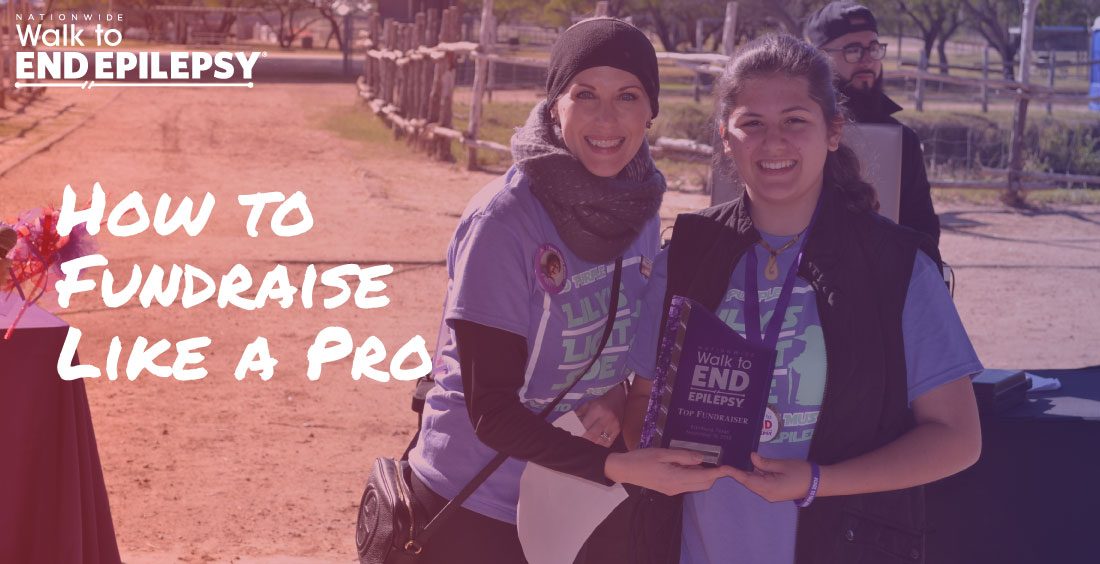
Fundraising doesn’t come naturally to everyone, but it is possible! With the right tools and the right support team behind you, you can become a superstar fundraiser in no time. Some of our past fundraisers shared their wisdom to tell us what made them successful.
Tell your story and know your audience
This one is important. There’s nothing that encourages someone to give more than a personal story. When you share your story, you’re letting everyone know that this cause is personally important to you! “When you are open and share your epilepsy journey all year long people are generally much more willing to donate when fundraising time comes around because it helps people to understand why funds and epilepsy awareness are so desperately needed,” said April Flowers in RGV.
“When asking for donations, play to [your] story, your strengths, and your audience,” said Amber Ross in Austin. “I had my first seizure at 33 [years old] and pregnant. I’m self-deprecating, can make fun of myself, and found a way to laugh at situations we found ourselves in. Family and friends would be my biggest supporters. I knew that, so I went with it.”
Make your ask personal
When you request a donation from a family member or a friend, make your ask personal. They will donate because YOU asked them to, and they want to support you. “Make your request for participation or donations personal. Tell people about why the Epilepsy Foundation is important to YOU and how their involvement will make an impact,” said Amber.
The Power of Social Media
Social media is a fast and straightforward way to spread a message to hundreds or thousands of people. Our very own Gato (Kathy Kraemer) used her social media network when she was fundraising in San Antonio, “Basically I asked my social media friends and family…I [posted] silly pictures of me in my tutu and crown with promises of more pics to follow at the event!”
Amber Ross used a similar tactic when fundraising and building her team. “I did multiple social media posts leading up to the various deadlines,” she said, “I chose to focus each post on a different part of my story. The first one was on my first seizure and diagnosis, the second covered the road to the right medications, and the third was our current state of affairs.”
Consistency is key
Just as April mentioned, telling her story consistently throughout the year hammered home the importance of her cause and made people more willing to give when the time came.
Similarly, Amber says, “Your friends and family likely really want to support you, but like all of us, get busy and forget they were going to sign on and donate. If you put the opportunity in front of them multiple times, it makes it a little easier for them to remember.”
Use your tools
We provide a plethora of helpful tools to get your fundraising started. If you have any questions about where to start, contact our Development Team at (210) 653-5353. We want to make sure you are successful!




Comments are closed.